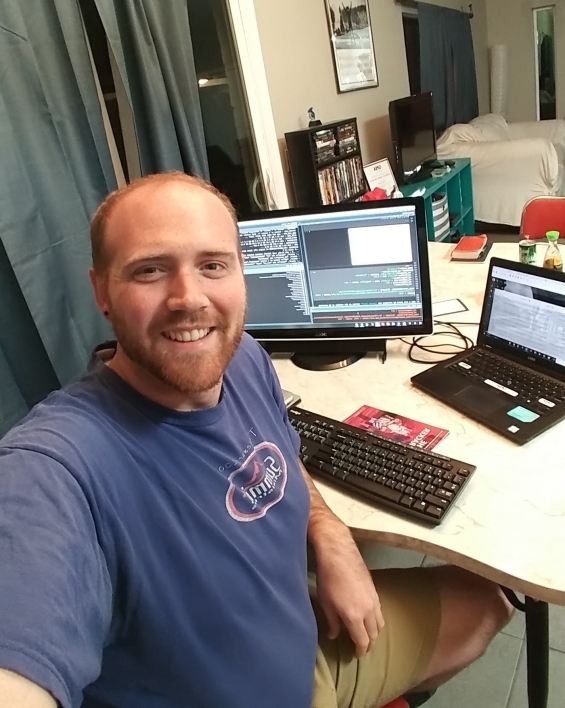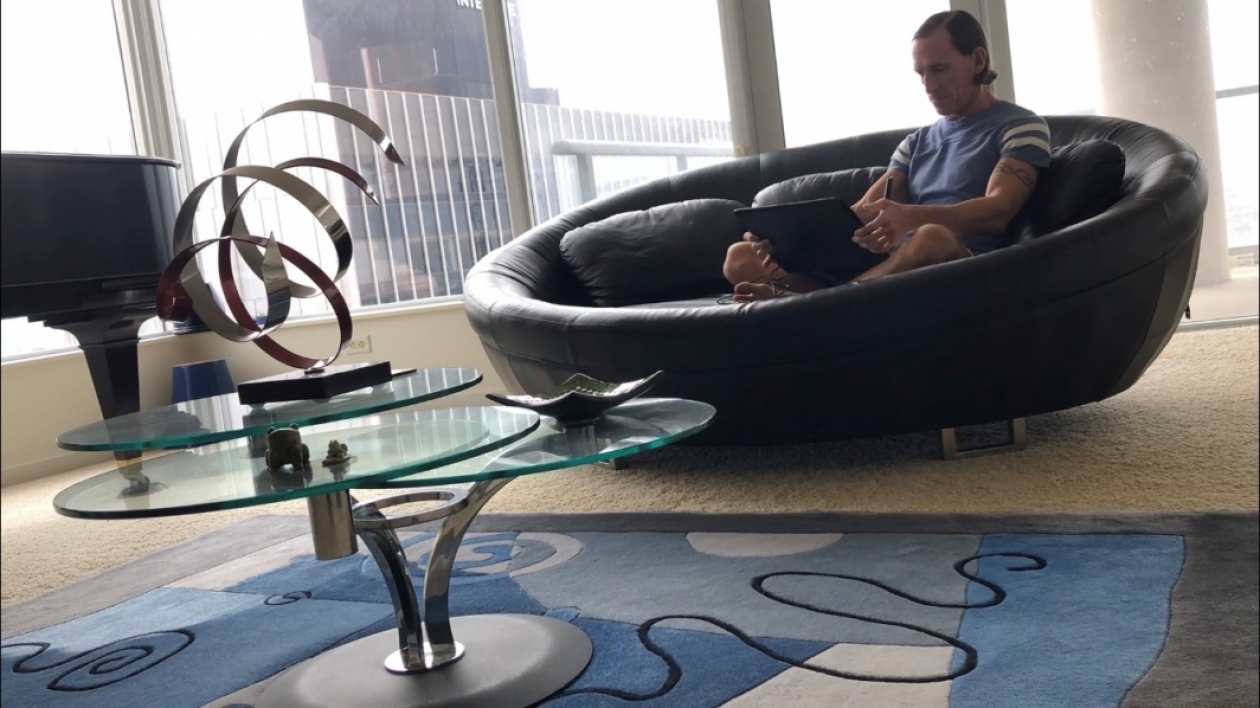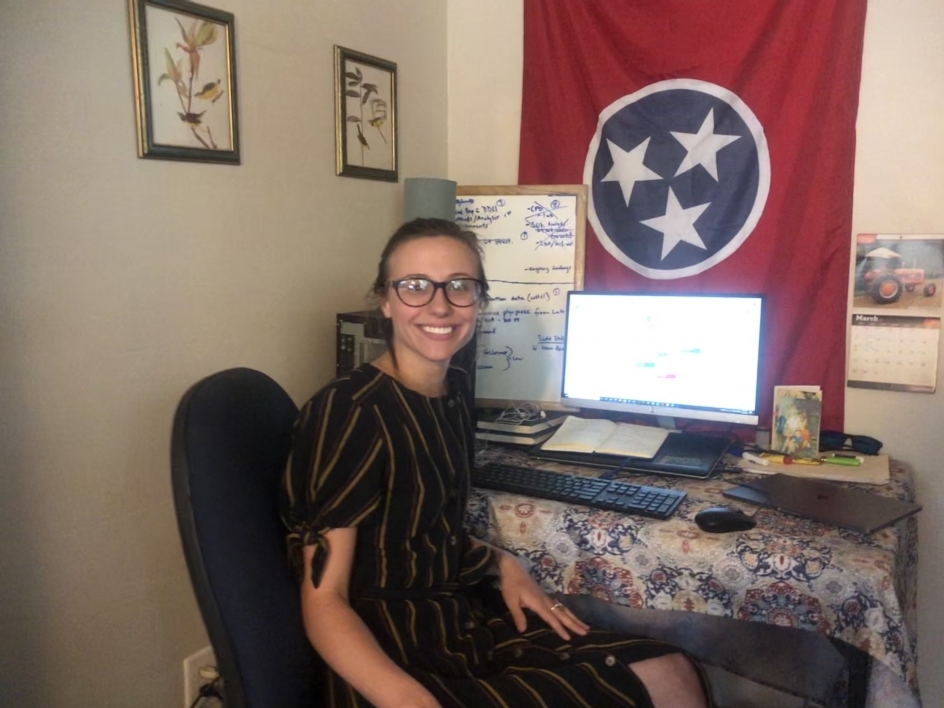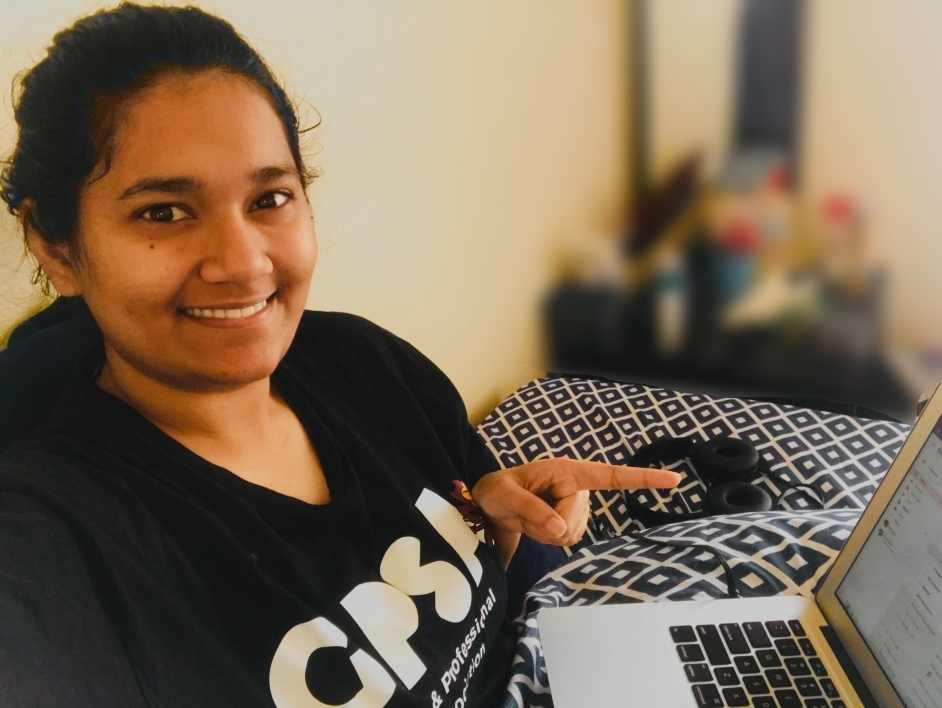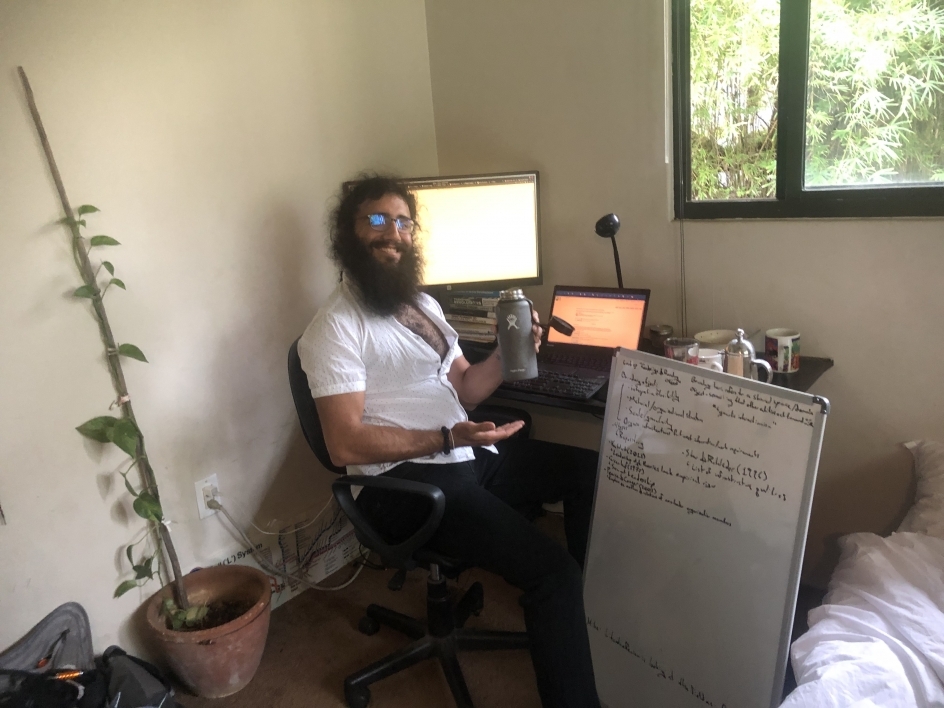ASU geographers, urban planners bridge distance gap, build community
The School of Geographical Sciences and Urban Planning faculty, staff and students use skills and creativity to support one another amid COVID-19

The School of Geographical Sciences and Urban Planning faculty, staff and students gather for virtual coffee.
On a recent Friday morning, nearly 30 Arizona State University School of Geographical Sciences and Urban Planning faculty, staff and students gathered for virtual coffee.
General updates were given. People shared how they were feeling and what they were working on. Jokes were told and poems were read. The group even sang happy birthday to a fellow staff member.
In the face of the unexpected coronavirus pandemic that has closed businesses around the world, moved ASU classes online and sent ASU staff home, smiles still filled laptop screens and people felt united.
“Coffee with the director is something we’ve done on and off when I’ve felt there were groups that needed more connection,” said Trisalyn Nelson, director of the School of Geographical Sciences and Urban Planning. “I just felt that it was an important time for people to have access to leadership and ask questions. I miss our family when we are not together. It’s a good way to stay connected.”
Leading the way for creative solutions
As the entire university adapts to new routines and schedules working and learning from home, students, faculty and staff are working together to create new pathways for maintaining community and engaging virtually.
Kelly Shea, a master's degree in advanced study in geographic information systems (GIS) student, says in light of the transition to online courses, her fellow GIS students created their own Zoom video chat room that is open 24/7 to collaborate with each other, answer questions and even chat about their day.
“Last night we were all struggling with an assignment and we hopped onto a Zoom call together to go over it,” Shea said. “I do miss the lab just because it was a quiet place to work outside of the house and I do miss the interaction with all of our classmates, but it’s been so nice, despite the circumstances, to be able to hop in there and collaborate if we still wanted to.”
Faculty, too, are utilizing technology to creatively maintain and increase their level of interaction with students inside and outside scheduled lectures.
“I’m encouraging students to keep open communications with me,” said Robin Martin, associate professor in the School of Geographical Sciences and Urban Planning. “I acknowledge there will be changes in their lives, kids at home, shifting work schedules — so keeping in contact and being available if they have a problem is important. I also want to keep their class going so they can have some sort of normalcy.”
Martin, who teaches geographic research methods, adapted her course to give students an opportunity to process their experience with COVID-19 and think critically about applying their human geographical knowledge to the pandemic from a spatial perspective.
“I wanted to give students an opportunity to write about this whole scenario, to think about relationships between data and the virus,” Martin said.
Jason Kelley, lecturer in the School of Geographical Sciences and Urban Planning who is currently teaching five courses that have now transitioned online, admits to having some hesitancy moving online at first, given the highly interactive nature of his courses, but both he and his students have been pleasantly surprised with the transition and the effectiveness of Zoom's capabilities.
“The positive feedback from my students has been a tremendous motivator for me personally,” Kelley said. “I was fearful that students would have a hard time with this transition, but they seem to have adapted quite well to the new format, and are still just as participatory and eager to learn as always. We have an incredible group of talented urban planning students in (our school), and their hard work and dedication continue to amaze me.”
Students helping other students
Support continues to come from all directions, and students are helping other students.
Peter Crank, a geography PhD student who currently is working on his dissertation from home, is exploring ways to help provide data sets that may no longer be attainable because of current physical distancing to faculty and students.
“There are students with term projects that are doing measurement-based stuff that they can no longer go out and measure,” Crank said. “I am working with faculty to see if there may be opportunities for us (graduate students) to lend the data that we already collected to these students so they can still do these projects.”
Maddy Kelley, a geography PhD student and member of the School of Geographical Sciences and Urban Planning's Graduate Student Committee (GSC), says the committee — made up of five graduate students — is working hard to strengthen the graduate community and be a resource for other students.
“Our GSC President Mehak Sachdeva is doing an amazing job keeping communication channels open between students and faculty. Changes are happening fast,” Kelley said. “Her leadership and work of the entire committee is a critical part of the GSC efforts.”
The student committee is planning a number of virtual events which include coffee breaks that connect students with faculty, workshop events, international student-focused events and research colloquiums.
The School of Geographical Science and Urban Planning faculty and staff are also working hard to move all scheduled colloquiums and events online and have additional virtual opportunities for students to stay engaged, including professional development resources.
Working together to assist with emergency response
Support and service extends beyond the classroom. The School of Geographical Sciences and Urban Planning department together — faculty, staff and students — are helping local and community partners respond to data and mapping challenges presented by COVID-19.
Master's of advanced study in GIS students Kelly Shea and Nerrissa Pinto are working alongside Melanie Gall, co-director for the Center for Emergency Management at Arizona State University, to leverage skills and help build situational awareness tools that can help emergency efforts.
“From a GIS perspective if there is mapping that needs to be done, it’s a unique time to be in right now,” Shea said. “I kind of wanted to reach out and help if I could because this is kind of an unprecedented thing for all of us.”
Pinto agreed adding, “This is a time when we all need to just help each other.”
Shea Lemar, GIS project manager in the School of Geographical Sciences and Urban Planning who teaches in the school’s master's of advanced study in GIS program, says the students' willingness and dedication to service during this time is commendable.
“They are trying to work from home, they are still in the midst of very intensive learning that just switched to online.They are already working on their own internships, as well starting major capstone processes,” Lemar said. “This is a time of stress in their lives, too, and then on top of all of it, they are still willing to find time to help others. I can’t imagine that’s easy considering how overwhelmed they already are. It’s really impressive.”
Patricia Solis, research professor in the School of Geographical Sciences and Urban Planning and executive director of ASU's Knowledge Exchange for Resilience, is leading a team of ASU students to map, validate and add any missing information about critical medical facilities across the globe.
Solis is co-founder and director of YouthMappers, a student-led consortium that is on more than 200 campuses and in 59 countries around the world. YouthMappers create mapping materials that help aid organizations and allow them to work more efficiently in emergency and development zones. Solis encourages anyone who is interested in helping to get involved, as there is no prerequisite skill or a specific major.
“It’s an amazing way for students to use their cartographic and data talents for a clear public need and doing so virtually without the requirement of physical fieldwork,” Solis said. “They can dedicate their skills and knowledge online and make a difference with a spatial perspective.”
Additionally, the School of Geographical Sciences and Urban Planning as a department has put out a call for any individual or organization that needs help to mobilize the department’s skills in GIS to help fight COVID-19. Students and faculty can map, analyze and create dashboards with data.
“I think people have responded in amazing, creative and generous ways to support students and each other during COVID-19,” Nelson said. “We have put an incredible emphasis on culture and creating a community and I think it’s times like this when it both pays off that we built this, but also is an opportunity to make it even stronger.”
More Environment and sustainability
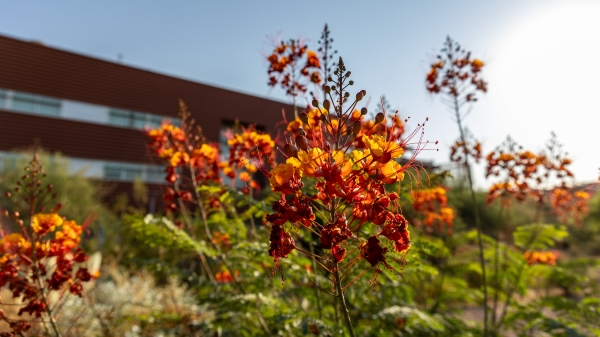
Barrett Honors College to host nature walks for science, relaxation
Barrett, The Honors College at Arizona State University is gearing up to participate in the City Nature Challenge (CNC) for the…
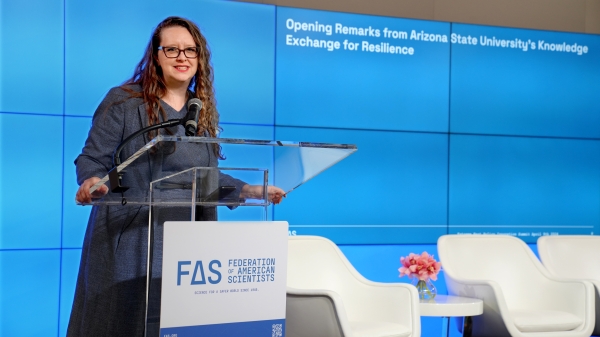
Arizona adapting to heat crisis with initiatives featured in ASU report
Arizona State University's Knowledge Exchange for Resilience, also known as KER, released its Recommendations Report on Extreme…

Celebrating Earth Day around the world
Originating in the United States in 1970, Earth Day is now celebrated worldwide. But even before it became an official day, many…
